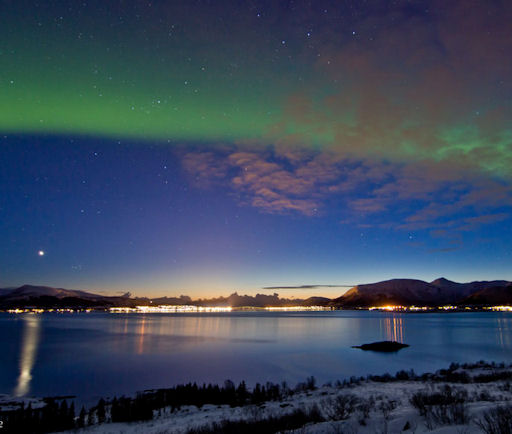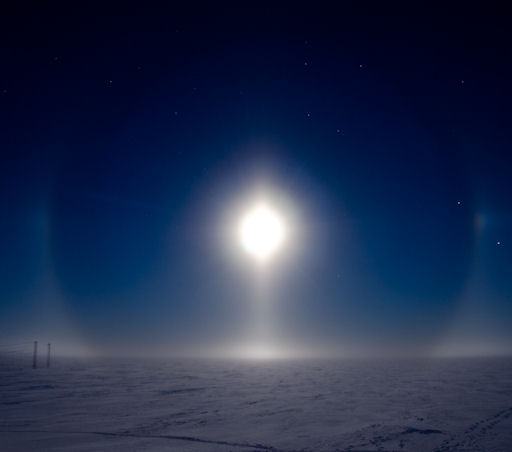Thirty-five new items have just been added to our Meteorite Jewelry collection. Browse the Space Weather Store for something out of this world. | | |
CHANCE OF MAGNETIC STORMS: NOAA forecasters estimate a ~30% chance of geomagnetic storms around the poles on April 9th. That's when a CME is expected to deliver a glancing blow to Earth's magnetic field. The cloud was propelled in our direction by a solar filament erupting on April 5th (movie). High-latitude sky watchers should be alert for auroras. Aurora alerts: text, phone.
LAST AURORAS OF THE ARCTIC SEASON? These days, whenever Arctic sky watchers see the aurora borealis, they inevitably wonder if that was it--the last display until autumn. Spring has sprung and soon the midnight sun will overwhelm the Northern Lights. This photo taken last night in Blokken, Norway, illustrates the problem:

"At midnight there was lots of light from the sunset," says photographer Frank Olsen. "And just an hour after this, the sunrise made the the horizon quite bright. These are probably our last auroras this season."
Famous last words? The combined effects of an incoming CME and a high speed solar wind stream could trigger one more display this week before the midnight sun takes over. Stay tuned for updates.
more images: from Sylvain Serre of Ivujivik, Nunavik, Quebec, Canada; from Yuichi Takasaka of Prelude Lake, Northwest Territories, Canada; from Göran Strand of Rörvattnet, Sweden
ANTARCTIC MOON HALO: In the icy lands around the south pole, ordinary things take on an exotic quality. Count moon haloes among them. On April 5th, Sam Burrell photographed this specimen rising above the Brunt Ice Shelf in Antarctica:

"Around midnight, the air on the Brunt Ice Shelf the air was filled with diamond dust," says Burrell. "As the moon rose, we caught this show."
Diamond dust is the atmospheric optics term for tiny, jewel-like crystals of ice. They form on cold days in the air near ground level. When they catch the rays of the low-hanging sun or moon, the results can be spectacular. "In this single display, we could see a moon halo, moondogs, and hints of a moon pillar," says Burrell.
You don't have to go to Antarctica, however, to see ice halos. Browse the links for more examples: from Ivo Dinsbergs of Riga, Latvia; from Mohamad Soltanolkotabi of Cameron high lands, Perak, Malaysia; from Pamm Reynolds of Deming, New Mexico; from Phil Loarie of Berkeley, California; from Grover Schrayer of Pittsburgh, Pennsylvania;

